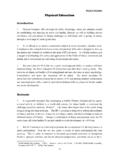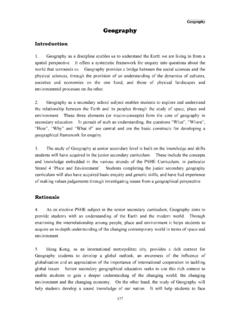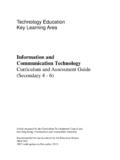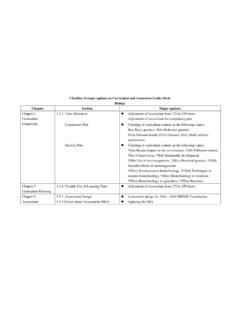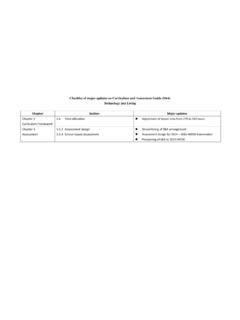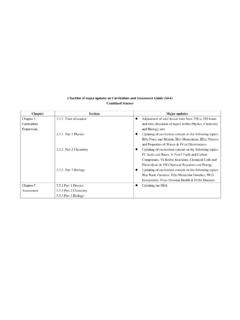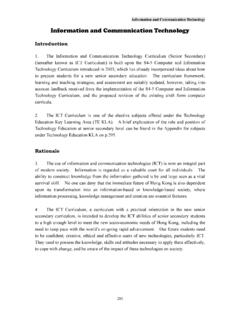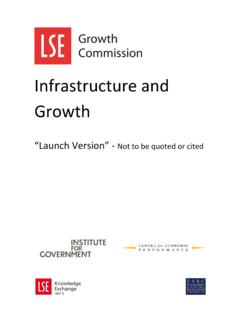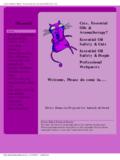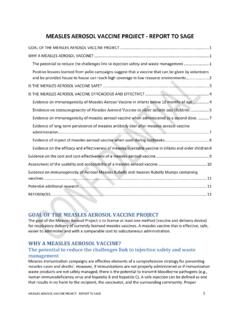Transcription of Literature in English - hkedcity.net
1 Literature in English 95 S4 S5 Literature in English S6 S7 Literature in English SS1 SS3 Literature in English Literature in English Introduction 1. The English Language Education curriculum comprises two closely related subjects: English Language and Literature in English . English Language is the core subject for students from primary to senior secondary level ( P1 SS3), and Literature in English is an elective subject for students at senior secondary level ( SS1 SS3). 2. As suggested in the following diagram, the design of the Senior Secondary Literature in English curriculum is built on the existing S4-5 Literature curriculum as well as the ASL and AL Literature curricula.
2 It also follows the general direction for development of the English Language Education curriculum set out in the English Language Education Key Learning Area Curriculum Guide (P1 S3) (2002). Literature in English extends the prior knowledge, skills and positive values and attitudes that students develop through the English Language curriculum, particularly in the area of language arts, for Basic Education from Primary 1 to Secondary 3. Existing Structure New Senior Secondary Structure Diagram showing the structure of the existing and the proposed new senior secondary Literature in English curriculum Rationale 3.
3 The rationale for studying Literature in English is as follows: It helps students develop a humanistic outlook on life. Through a close interaction with literary or creative works which portray a diverse range of human thought, emotion and experience, learners are able to gain knowledge and understanding of the nature of human existence and to develop insights into and an appreciation of the world and of the society in which they live. Literature in English 96 Seeking to represent the human situation through a creative, emotive use of language, literary or creative texts are capable of offering learners much aesthetic, intellectual and emotional pleasure.
4 The study of Literature in English has many practical aspects: z It provides ample opportunities for learners to develop their creativity, sharpen their critical and analytical skills, and enhance their language proficiency; z It broadens their awareness of the culture of different places where English is used, and enhances their appreciation and understanding of Hong Kong as a culturally diverse society; and z The intellectual, aesthetic and emotional qualities, which Literature in English helps learners develop, prepare them for further study or work, particularly in areas such as publications and the media, where creativity, critical thinking and intercultural understanding are highly valued.
5 Curriculum Aims 4. The aims of the Literature in English curriculum are to enable learners to: appreciate and enjoy a wide range of literary or creative texts and other related cultural forms; develop their capacity for critical thinking, creativity, self-expression, personal growth, empathy and cultural understanding; enhance their awareness of the relationship between Literature and society; develop a greater sensitivity to and control over the nuances of the English language; and be adequately prepared for areas of further study or work, where qualities promoted in the study of Literature , such as creativity, critical thinking and intercultural understanding, are highly valued.
6 Curriculum Framework (This part should be read in conjunction with the section Curriculum Framework of the Main Document. It should be noted that the curriculum framework suggested below is for initial consultation only. Feedback from the public will be taken into account and further details will be provided in the next stage of consultation.) Literature in English 975. As an elective subject, Literature in English constitutes 10% (approximately 255 hours) of the total lesson time of the senior secondary curriculum.
7 Lesson time should be allocated according to students needs with due consideration of their strengths and weaknesses. Equal emphasis should be placed on the various genres of prose, poetry, drama and film that students are required to study in the subject, and sufficient time should be allocated for initiating desired responses from students and providing advice and support on portfolio work and other related learning activities. The following is a suggested time allocation for the Literature in English curriculum: Percentage of lesson time (Approx.)
8 Number of hours) Study of Set Texts 50% (128 hours) Literary Appreciation (Unseen texts) 30% (76 hours) Portfolio (Group work/Individual tutorials) 20% (51 hours) 6. The Literature in English curriculum is organized into 4 Strands, which define the major targets or purposes of studying Literature , the Interpersonal Strand (for conversing, arguing, justifying and discussing ideas, feelings and points of view about literary works); the Knowledge Strand (for developing and applying literary knowledge through interacting with literary texts).
9 The Experience Strand (for understanding, enjoying and appreciating literary works and responding freely and imaginatively to them); and the Language Strand (for developing competency in language through critical reading of literary texts, and oral/written responses and discussion). 7. The Literature in English curriculum comprises learning objectives or focuses which embody the essential content of learning for the subject. They include: knowledge of literary/creative works, focusing mainly on poetry, prose, drama and films; skills of literary comprehension and appreciation; literary competence development strategies; and attitudes.
10 Literature in English 98 Learning Targets 8. The learning targets for a subject set out the knowledge/concepts, skills, values and attitudes that students need to develop. Students are expected to achieve the targets for Literature in English at senior secondary level under the various Strands listed below: Interpersonal Strand (a) to present views and explain interpretations and evaluations of literary or creative texts1 in English in the genres of prose, poetry, drama and film from around the world (b) to discuss literary or creative texts in terms of themes, issues, language and style Knowledge Strand (a) to recognize the major features of literary or creative forms such as prose, poetry, drama and film (b)
